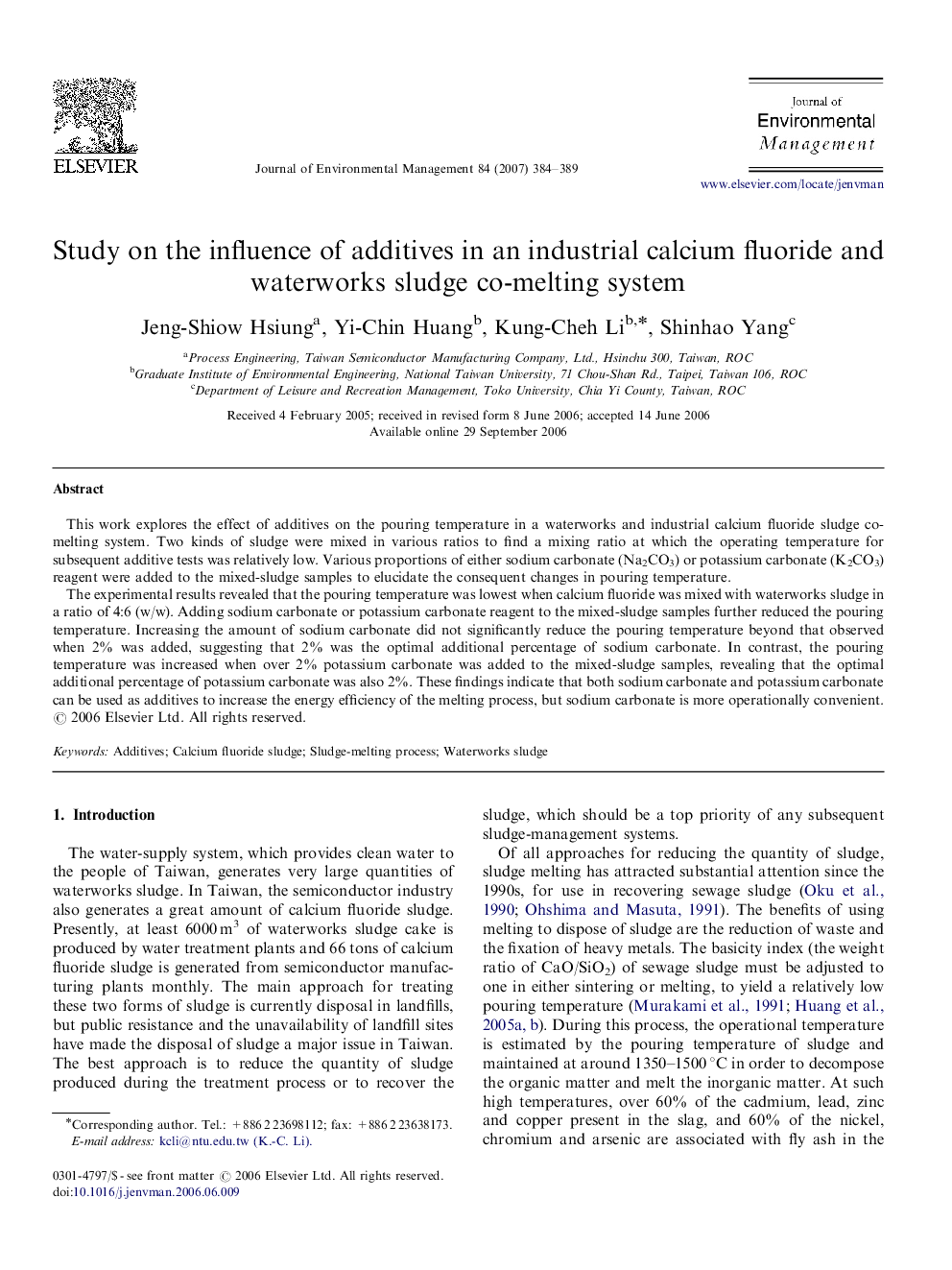| Article ID | Journal | Published Year | Pages | File Type |
|---|---|---|---|---|
| 1058642 | Journal of Environmental Management | 2007 | 6 Pages |
This work explores the effect of additives on the pouring temperature in a waterworks and industrial calcium fluoride sludge co-melting system. Two kinds of sludge were mixed in various ratios to find a mixing ratio at which the operating temperature for subsequent additive tests was relatively low. Various proportions of either sodium carbonate (Na2CO3) or potassium carbonate (K2CO3) reagent were added to the mixed-sludge samples to elucidate the consequent changes in pouring temperature.The experimental results revealed that the pouring temperature was lowest when calcium fluoride was mixed with waterworks sludge in a ratio of 4:6 (w/w). Adding sodium carbonate or potassium carbonate reagent to the mixed-sludge samples further reduced the pouring temperature. Increasing the amount of sodium carbonate did not significantly reduce the pouring temperature beyond that observed when 2% was added, suggesting that 2% was the optimal additional percentage of sodium carbonate. In contrast, the pouring temperature was increased when over 2% potassium carbonate was added to the mixed-sludge samples, revealing that the optimal additional percentage of potassium carbonate was also 2%. These findings indicate that both sodium carbonate and potassium carbonate can be used as additives to increase the energy efficiency of the melting process, but sodium carbonate is more operationally convenient.
